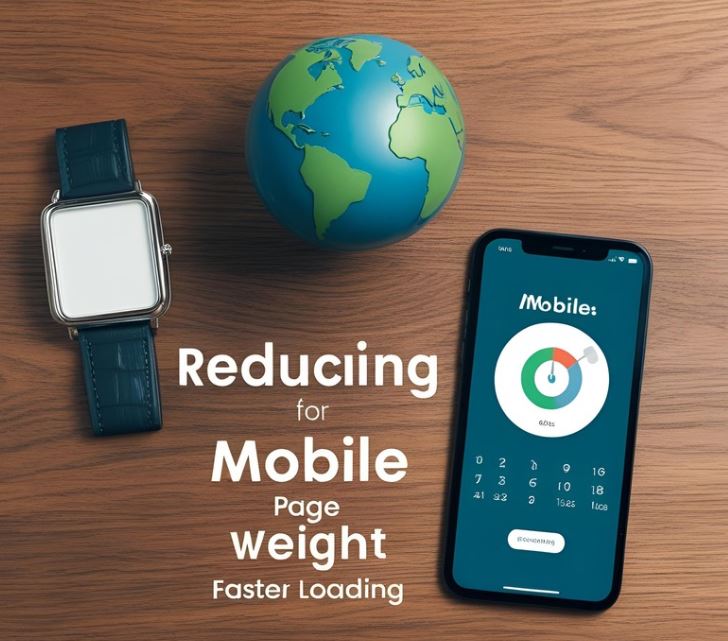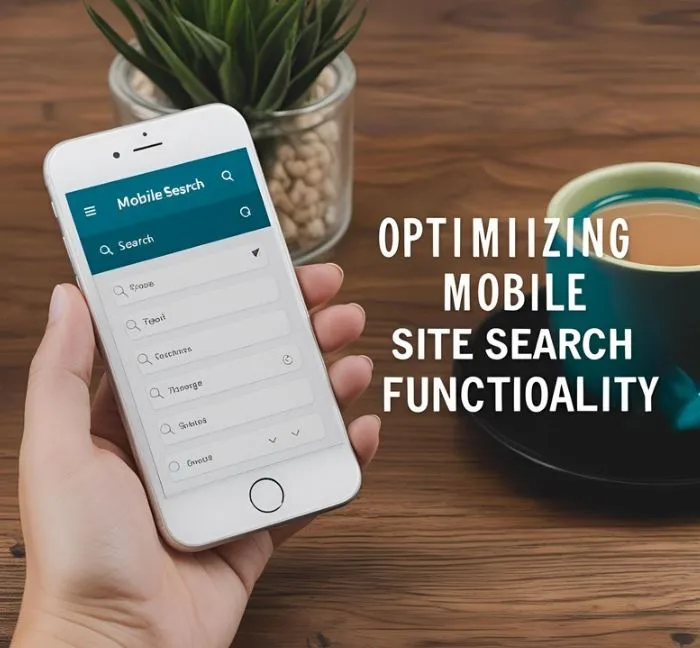
Mobile-friendly website design
Importance of Mobile-Friendly Design
Having a mobile-friendly website design is crucial in today's digital age. With the increasing number of users accessing the internet through mobile devices, it is essential to ensure that your website is optimized for mobile viewing.
Benefits of Mobile Optimization
- Improved User Experience: A mobile-friendly design provides a seamless user experience, making it easy for visitors to navigate your site on their smartphones or tablets.
- Increased Traffic: By catering to mobile users, you can attract a larger audience to your website and potentially increase your traffic.
- Higher Search Engine Rankings: Search engines like Google prioritize mobile-friendly websites in their search results, which can improve your site's visibility online.
Examples of Mobile-Friendly Features
- Responsive Design: Websites that adjust their layout based on the user's screen size provide a better viewing experience on mobile devices.
- Fast Loading Speed: Mobile users expect quick loading times, so optimizing your site's speed is crucial for retaining visitors.
- Mobile-Friendly Menus: Using collapsible menus or hamburger icons can make navigation easier on smaller screens.
Page load speed optimization

Page load speed optimization
Page load speed is crucial for a good user experience. Here are some tips to optimize your website's load speed:
- Optimize images: Make sure images are in the right format (JPEG or PNG) and are compressed without losing quality. For example, instead of uploading a 2MB image, compress it to 200KB.
- Minify CSS and JavaScript: Remove unnecessary spaces, comments, and characters from your code to reduce file sizes. Tools like UglifyJS can help with this.
- Leverage browser caching: Set expiration dates for how long browsers should cache your website's static resources like images, CSS, and JavaScript files. This reduces the need for repeated downloads.
- Enable compression: Gzip compression can significantly reduce file sizes and speed up page load times. Most web servers support this feature.
- Reduce server response time: Optimize server configurations, database queries, and code to ensure quick responses to user requests.
Mobile-responsive content

Importance of Mobile-Responsive Content
In today's digital age, it's crucial to ensure that your website or online platform is mobile-responsive. This means that your content is optimized for viewing on various devices, such as smartphones and tablets.
Benefits of Mobile-Responsive Design
- Improved User Experience: Responsive design ensures that your content is easily accessible and readable, leading to a positive user experience.
- Increased Traffic: With more people accessing the internet via mobile devices, having mobile-responsive content can help attract a larger audience.
- Higher Conversion Rates: A seamless mobile experience can lead to higher conversion rates as users are more likely to engage with your content.
Example of Mobile-Responsive Content
For example, a mobile-responsive website will adjust the layout and font sizes to fit the smaller screen of a smartphone, making it easy for users to navigate and consume the content without zooming in or out.
Structured data markup

Structured data markup is a way to organize and mark up your website's content to help search engines understand it better.
For example, if you have a recipe website, you can use schema.org markup to specify the ingredients, cooking time, and nutrition information of each recipe.
By adding structured data markup to your website, you can improve your chances of having rich snippets appear in search results, which can lead to higher click-through rates.
Common types of structured data markup include JSON-LD and Microdata.
- JSON-LD example:
{"@context": "http://schema.org", "@type": "Recipe", "name": "Lasagna", "recipeIngredient": ["Pasta", "Tomato sauce", "Cheese"], "cookTime": "PT1H"} - Microdata example:
<div itemscope itemtype="http://schema.org/Recipe"><h3 itemprop="name">Lasagna</h3><ul><li itemprop="recipeIngredient">Pasta</li><li itemprop="recipeIngredient">Tomato sauce</li><li itemprop="recipeIngredient">Cheese</li></ul></div>
Mobile usability testing

What is Mobile Usability Testing?
Mobile usability testing is a method used to evaluate how user-friendly a website or application is when accessed on a mobile device.
Why is Mobile Usability Testing Important?
- It helps identify any usability issues that may arise specifically on mobile platforms.
- It ensures that the user experience is optimized for mobile users.
- It can lead to higher conversion rates and customer satisfaction.
How to Conduct Mobile Usability Testing
There are various methods to conduct mobile usability testing, such as:
- Remote testing with tools like UserTesting.
- In-person testing with actual users using the mobile device.
- Using mobile usability testing platforms like Lookback or Validately.
XML sitemap for mobile version

If you have a mobile version of your website, it's important to create a separate XML sitemap specifically for the mobile version. This will help search engines like Google understand the structure of your mobile site better and improve its visibility in mobile search results.
Why create a separate XML sitemap for the mobile version?
Having a dedicated XML sitemap for your mobile site allows you to provide specific information about the mobile-specific URLs, ensuring that search engines can crawl and index them accurately.
How to create a mobile XML sitemap:
To create a mobile XML sitemap, you can use tools like Google's Search Console or third-party sitemap generators that offer options for generating separate sitemaps for mobile sites. Make sure to include all the important URLs of your mobile site in the sitemap.
Example of a mobile XML sitemap:
- Mobile Homepage: www.yourmobilesite.com
- About Us Page: www.yourmobilesite.com/about
- Contact Page: www.yourmobilesite.com/contact
By creating and submitting a mobile XML sitemap to search engines, you can ensure that your mobile site is properly crawled and indexed, leading to better visibility and rankings in mobile search results.
Mobile-friendly SEO tactics

Mobile-friendly SEO tactics
- Ensure your website is responsive, meaning it adjusts to fit different screen sizes. For example, when someone views your site on a smartphone, the text and images should still be clear and easy to read.
- Optimize your images for mobile devices by reducing file sizes without compromising quality. This can help improve loading times, which is crucial for mobile users who are often on-the-go.
- Use descriptive meta tags and titles to improve your site's visibility on search engines. For instance, if you have a local bakery, include keywords like "best cupcakes in [your city]" to attract nearby customers searching on their phones.
- Implement a clean and user-friendly design. Avoid cluttered layouts and ensure that buttons and links are easily clickable on touchscreens. This can enhance the overall user experience and encourage visitors to stay on your site longer.
Monitoring mobile traffic and performance

Why is monitoring mobile traffic important?
Understanding how users interact with your website on mobile devices can help you make informed decisions to improve their experience.
Identifying trends in mobile traffic can guide your marketing and content strategies.
How to monitor mobile traffic and performance?
Use tools like Google Analytics to track mobile users' behavior, including page views, bounce rates, and conversion rates.
Test your website's performance on different mobile devices and networks to ensure fast loading times and smooth user experience.
Example:
If you notice a high bounce rate on your mobile site, you may want to optimize your landing pages for mobile users by improving loading speed and making the content more mobile-friendly.











